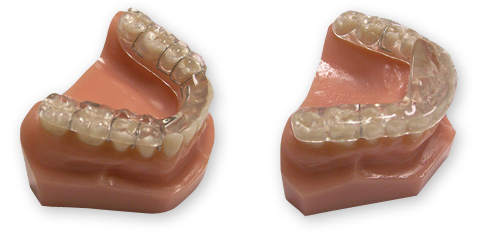Why Should You Fix It?
Often, the person and health care provider may not be aware that a TMD is present and is contributing to or is the cause of the existing health complaints and symptoms. This makes treatment very frustrating for both the patient and the practitioner.
In these cases the symptoms do not resolve completely, or they keep returning and thus the patient needs to be placed on a ‘maintenance’ schedule, or are told they need to ‘learn to live with it’. In many other cases long-term pain management, neuralgia-type, and / or opioid medications are prescribed to mask or reduce symptoms as the cause of the condition cannot be found or isolated.
In the majority of these cases, without treating the TMD, many symptoms cannot be stabilised and allowed to heal. And vice versa, without treating the other symptoms, we often cannot alleviate the TMD.
Treatment of TMD
Diagnosis of a person suffering from TMD can be very complicated and confusing. The disorder and resultant symptoms and dysfunction often results in significant pain and impairment because the disorder transcends many boundaries of health professions – in particular dentistry, neurology, general medicine, physiotherapy, osteopathy, and psychology.
Therefore, in many cases treatment may involve a ‘team’ of people with specialised skills and may occur over a period of months rather than days or weeks. This is especially true for those patients that have a chronic long-term condition that has developed into a ‘pain cycle’.
A correct diagnosis involves as a first step a very lengthy and detailed medical, dental, and social history in an office setting that will typically take around 1 hour, and occasionally longer. This is crucial and an often overlooked part of the TMD diagnosis. Often, the cause of the TMD can go back many years if not decades.
If required, the use of x-rays, CT scans, MRI’s, jaw measurements, plaster models of your teeth, airway assessment, at home and in hospital sleep studies, and occasionally photographs may then be arranged depending on the history and symptom presentation.
* It should be noted however, that nearly all diagnoses of TMD’s can be performed with a sound examination and history taking by an experienced practitioner. Expensive computerised and electronic diagnostic TMJ equipment found in many dental practices are rarely (if ever) required.
Only after a confirmed diagnosis of TMD will any form of treatment be suggested.
Treatment is aimed at reducing muscle pain, improving sleep quality, ‘decompressing’ the TMJ, improving body posture, and importantly reducing as many external inputs to pain as possible. By positioning your lower jaw and teeth in an orthopaedic relationship with the upper jaw so your head and neck muscles are in a relaxed state, they automatically will guide you into a comfortable corrected bite. This position is then recorded and confirmed for the construction of any intraoral appliances should they be required.
Depending on the diagnosis made and the severity of the TMD, an appliance (splint) that is worn at night during sleep, and/or a day appliance may then be constructed. Your new bite relationship is held in place by the custom made plastic splint that fits over the teeth for wear during waking hours, and one that is worn during sleep.
In the majority of cases (80%) no splint is actually required.
When a splint is issued it is typically only a night orthotic that is needed, whilst in others that are more complex TMJ problems, the use of partial dentures, overlay dentures, or other custom designed appliances may also be used to hold and maintain your new bite position.
However, in many more cases and indeed on the whole, simple exercises and self-management techniques without the use of splints being prescribed have excellent outcomes. It is not unusual for people to have life-changing relief of pain using simple conservative measures once a proper and comprehensive diagnosis has been made. And of course, expensive irreversible dental treatment is never the answer.
The exact nature of any treatment is always based entirely on the diagnosis for each individual.


